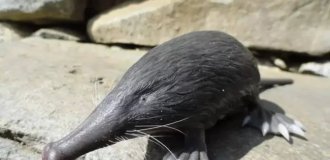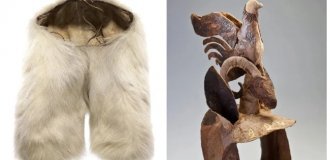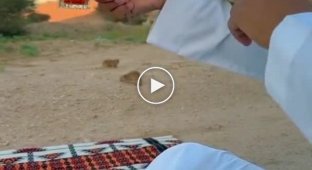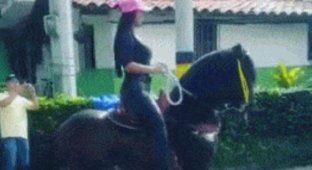Hedgehogs in Madagascar - exoticism of the extreme level (11 photos)
This animal is the size of a palm, but its relatives are elephants, hyraxes and aardvarks. Its entire body is covered in needles. Defense against enemies is the most trivial part of the capabilities of its body vegetation. With its spines, the animal can communicate with relatives at a distance. And with its back, it can find prey. 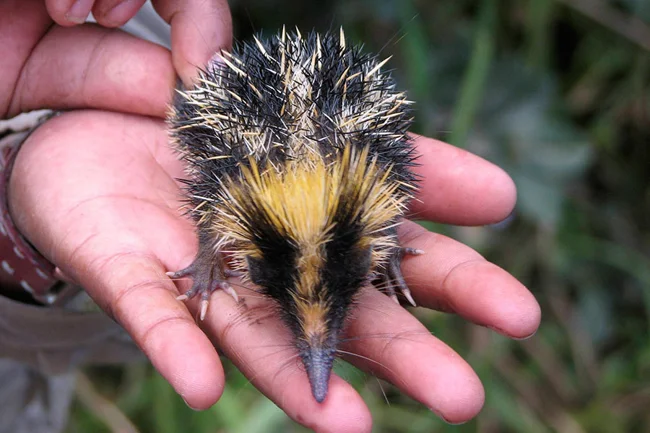
The photo did not add clarity to the description....
It all began several tens of millions of years ago with the fact that some small animal got into trouble: from its native Africa it was carried out to sea and washed up on the shores of Madagascar. Shaggy Robinson did not give up, but began to conquer a new land, mastering a dozen professions. This is how tenrecs appeared - a family of very unusual mammals. 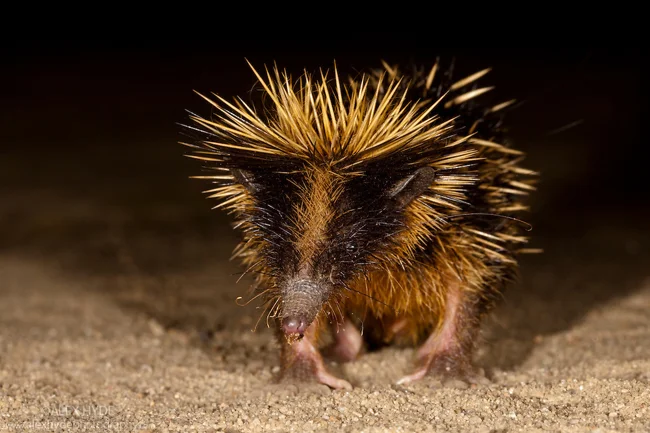
There are 31 species of tenrecs. And each of them has adapted to its niche.
The animals quickly occupied all the free niches. Moreover, they did it so successfully that scientists did not think about their origin for a long time - they automatically attributed them to insectivores. But after digging into the genealogies, tenrecs were sent closer to hyraxes, elephants, sirens and aardvarks - to the superorder Afrotheria. 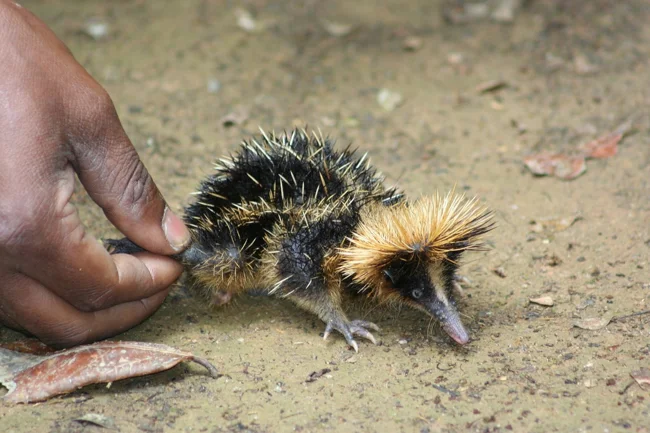
Hey, let me in! Do you even know who my relatives are?!
The striped tenrec has professionally mastered the "profession" of a hedgehog. Insectivorous diet, modest dimensions, chronotype of an owl, burrow lifestyle. But the hedgehog turned out with a Madagascar joke. So the features familiar to us acquired an alien form. 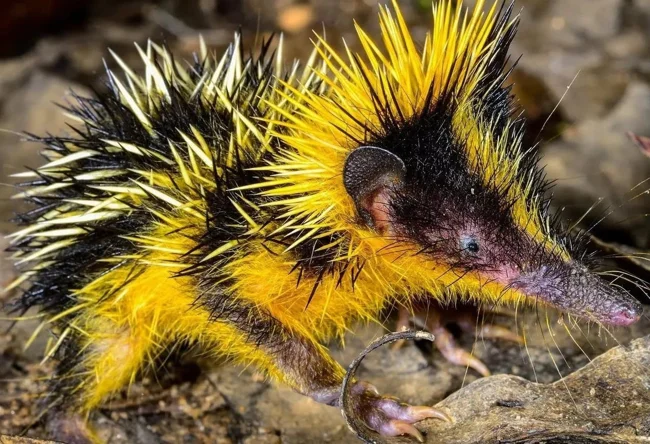
Pikachu! Life has really battered you!
The first thing that catches your eye is his coloring. Our comrade has an eye-catching tropical coloring - black with yellow stripes. Plus: a punk mohawk, a scattering of sharp claws and needles. Such a set would be useful for creating anarchy. But judging by the tenrec's beady eyes, it's clear that he's a peace-loving guy. And it's hard to shake up a group when you're quietly rummaging through the forest floor in search of worms and bugs. 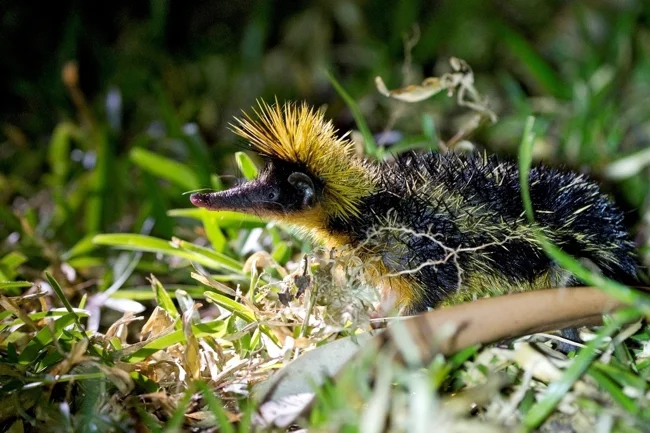
I wonder if tenrecs are black with yellow stripes or yellow with black?
Tenrecs don't bully others, but they won't let anyone hurt them either. Unlike hedgehogs, tenrec spines break off after they've dug into an enemy and remain in the skin. In addition to pain and humiliation, the predator gets a chance to kick its paws back. If you don't remove the foreign body correctly, it will go deeper. And then: inflammation, suppuration, sepsis. Not a great prospect... 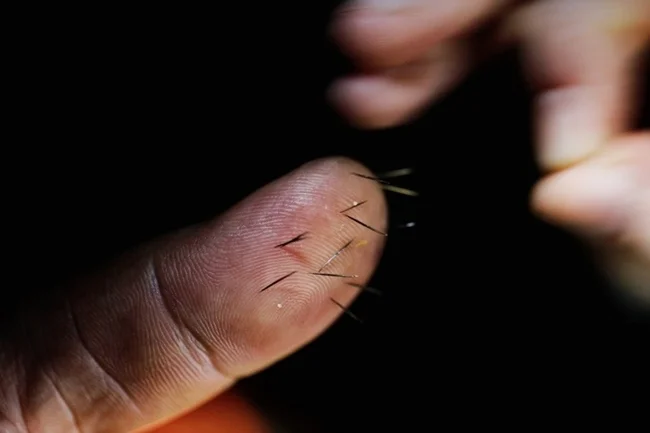
A photograph can't hurt you, they said...
The tenrec saved his barbs not only for his enemies, but also for his loved ones. It turned out that the rows of prickles are useful not only for defense, but also for communication. With the help of special muscles, tenrecs rub their needles against each other. The result is a whole orchestra of ultrasonic signals, similar in sound principle to the musical repertoire of crickets and grasshoppers. This type of communication is called stridulation. Striped tenrecs are the only mammals on the planet that are capable of it. 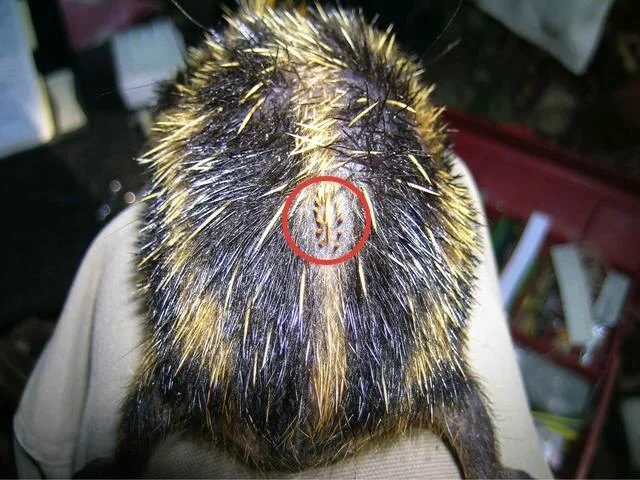
Tenrecs chirp with special needles. Scientists have called them "feathers." They are directed toward each other and are activated by special muscles.
Without losing your voice, you can ask a gentleman out on a date, declare a state of emergency for your entire family, or simply have small talk with your neighbors. The chirping can be heard at a distance of more than 10 m! But enemies most likely cannot hear the tenrecs' communication. The Madagascar "hedgehogs" chatter at a frequency of 2 to 200 kHz. 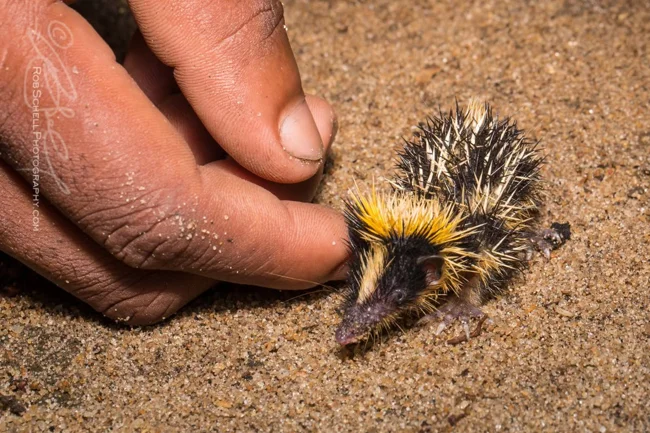
For humans, tenrecs' conversation sounds like the crackling of grass. But most often, the human ear does not perceive the frequency at which animals communicate.
On the back of tenrecs there is not only a "mouth". But also "eyes". In addition to spines and fur, the animals have vibrissae - special sensitive hairs growing on their bodies. Tenrecs sense with their butt when someone is approaching them. Literally. 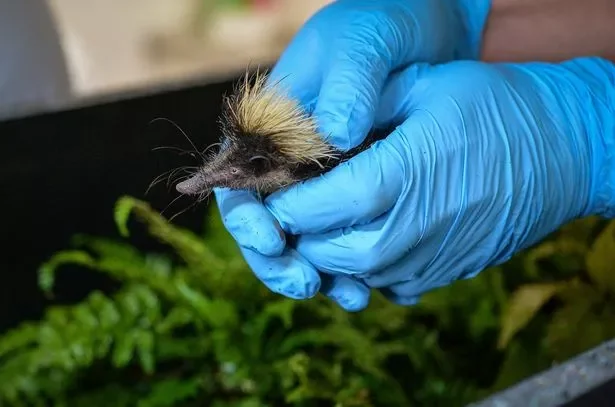
What a strange predator. So soft and rubbery!
This is a useful thing: the animal spends most of its life underground, where its eyes are no help. It's all because of its dietary preferences: striped tenrecs love earthworms. When they can't find them underground, the tenrec comes to the surface and stomps its paws loudly. Not out of resentment. The animal knows: the booming sound reminds invertebrates of falling drops, which means it's time to get to the surface. This is how the tenrec calls earthworms without rain. 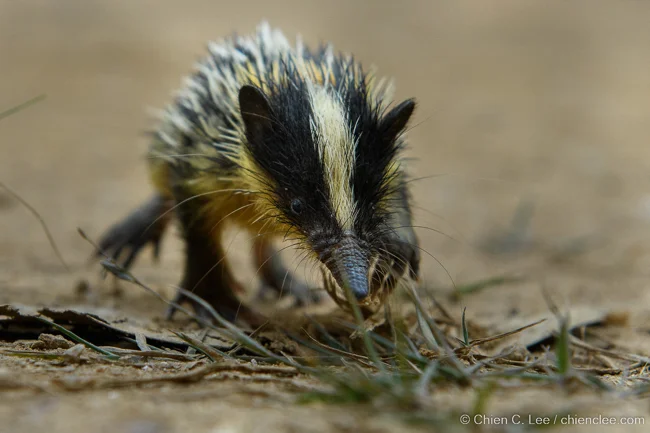
This guy would be a great participant in a rave party!
Usually, the burrowing and insectivorous lifestyle is led by complete introverts of the animal world. But striped tenrecs have chosen to live in a commune. The group includes several adults and a brood of young. Fortunately, the burden of parental responsibility does not weigh on tenrecs for long. After two months of pregnancy, the female finds herself the mother of up to a dozen small tenrecs. The shock, however, quickly passes - the brood becomes sexually mature in just 25 days. 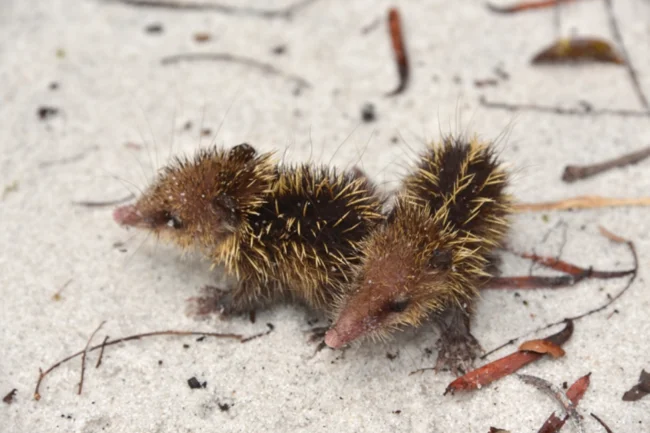
These are the children of the striped tenrec. They are shocked by the information that human childhood lasts until 18 years.
Yes, less than a month after birth, young tenrecs are ready to churn out their own batch of babies. The sprint to maturity was so fast that it secured the striped tenrec a place in the Guinness Book of Records! He became the fastest growing mammal.






